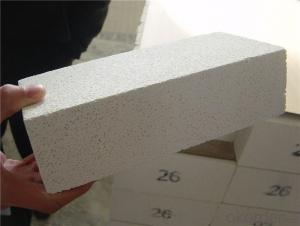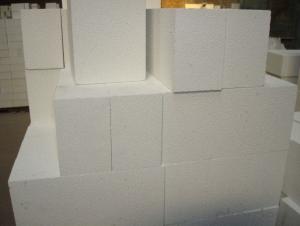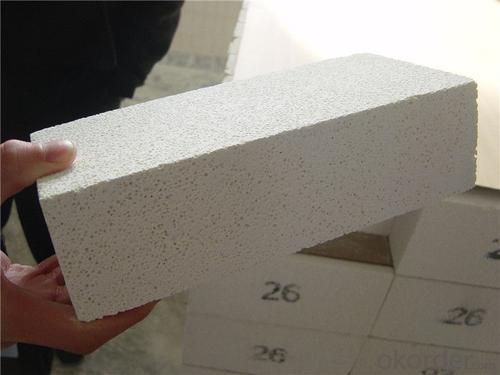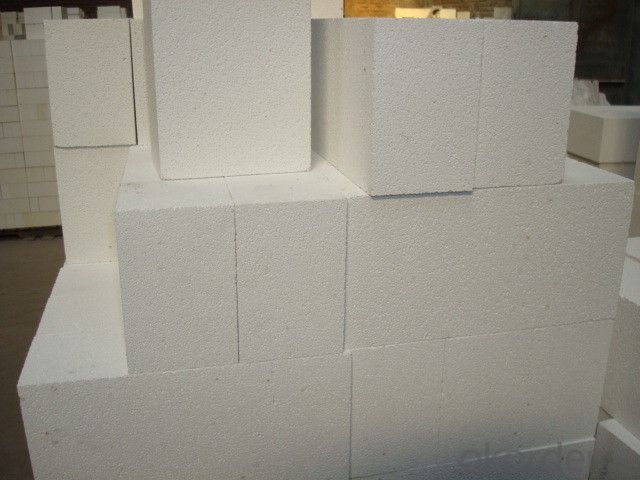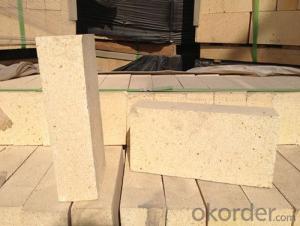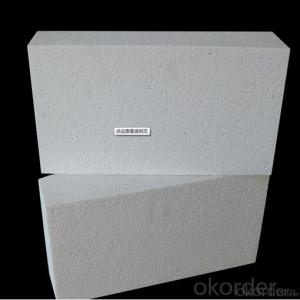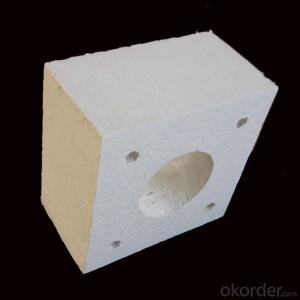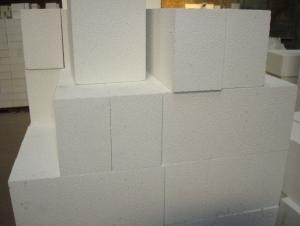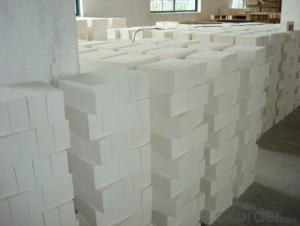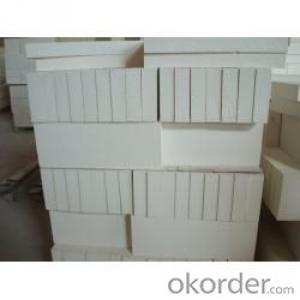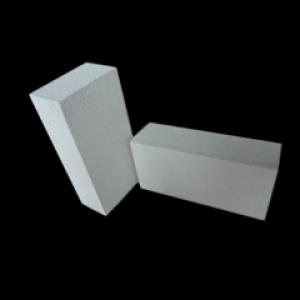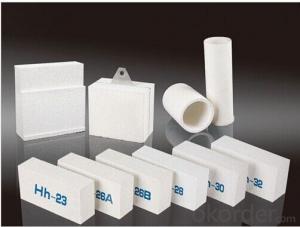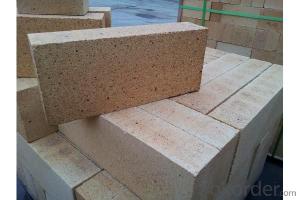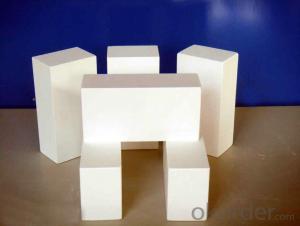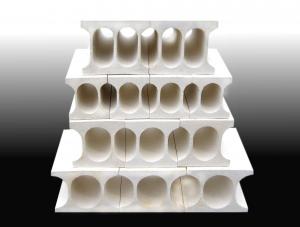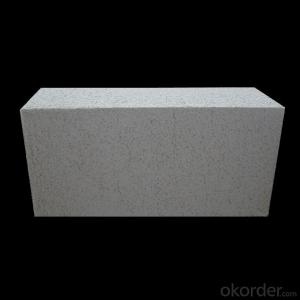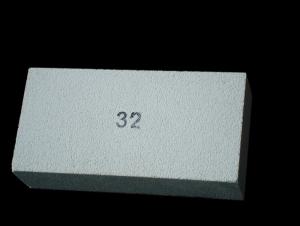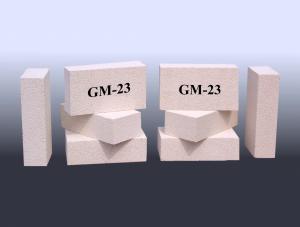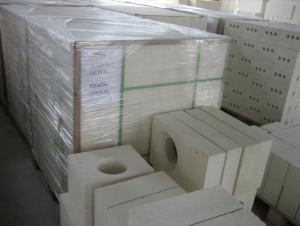Insulating Fire Brick - Insulating Brick, Insulation Brick, Mullite Brick
- Loading Port:
- Shanghai
- Payment Terms:
- TT OR LC
- Min Order Qty:
- 1 m.t.
- Supply Capability:
- 1000 m.t./month
OKorder Service Pledge
OKorder Financial Service
You Might Also Like
CNBM conforms strictly to the requirements of ISO 9000 quality control system during the production. MSDS is also available if you want. The thermal insulation fire clay brick meet with the requirements of ASTM & JIS standards. So please stay cool with our quality.
Application
Insulating Fire Brick are used for the lining of converter, alternating current arc furnace, direct Current arc furnace and the ladle slag line, etc.
Insulating Fire Brick Technical index
Brand Quality | JM23 | JM26 | JM28 | JM30 | JM32 | |
Bulk Density (g/cm3) | 0.52 | 0.78 | 0.88 | 1.03 | 1.25 | |
1.2 | 1.6 | 2.1 | 2.5 | 3.5 | ||
Modulus of Rupture (Mpa) | 0.9 | 1.4 | 1.6 | 2.1 | 2.1 | |
-0.5 | 1400℃ -0.4 | 1510℃ -0.5 | 1620℃ -0.9 | 1730℃ -0.9 | ||
Thermal Expansion 1100℃(%) |
0.5 |
0.7 |
0.8 |
0.9 |
1.1 | |
Thermal conductivity(W/m.k)
| 400℃ | 0.14 | 0.27 | 0.32 | 0.41 | 0.49 |
600℃ | 0.16 | 0.29 | 0.34 | 0.43 | 0.50 | |
800℃ | 0.18 | 0.31 | 0.36 | 0.44 | 0.51 | |
1000℃ | 0.20 | 0.33 | 0.38 | 0.45 | 0.53 | |
Al2O3 | 37 | 58 | 67 | 73 | 77 | |
Fe2O3 | 0.7 | 0.7 | 0.6 | 0.5 | 0.4 | |
Equipment
1 unit of Ceramic Abrasive (SG Abrasive) pilot production line
2 units of Compact grain Abrasive pilot production lines
1 unit of high-end coated abrasives (abrasive cloth) production line
2 units of Boron Carbide production lines
3 large flexible crushing and sieving lines for grit production lines
2 units of 2000KVA furnaces for Boron Carbide fusion
6 units of 5000KVA-10000KVA dumping type electric arc furnaces for Brown Fused Alumina fusion
Company Advantage
(1)Long Insulating Fire Brick manufacture history: 25 years manufacturer
(2)Advanced equipment
(3)Diversification of production standards: ISO ANSI FEPA JIS ASTM
(4)Flexible payment: T/T L/C D/P D/A
(5)Professional marketing team and after-sale service
(6)Free sample
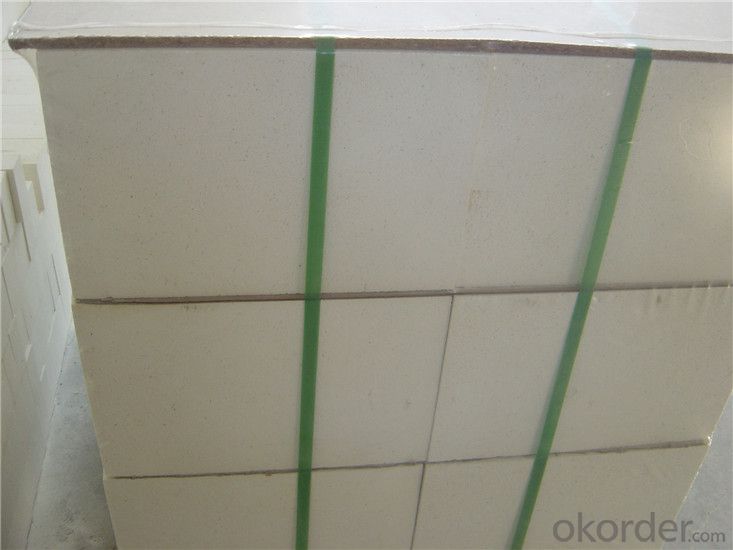
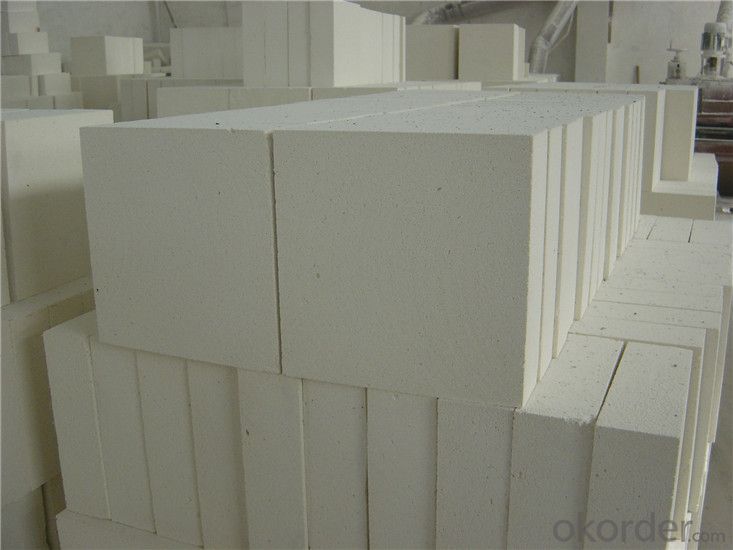
- Q: Can insulating fire bricks be used in power plants?
- Yes, insulating fire bricks can be used in power plants. Insulating fire bricks, also known as refractory bricks, are designed to withstand high temperatures and provide excellent thermal insulation. They are commonly used in various industrial applications, including power plants. Power plants generate a significant amount of heat during the combustion of fossil fuels or the process of nuclear fission. To maintain efficient operations and prevent heat loss, insulating fire bricks are used to line the walls, floors, and ceilings of furnaces, boilers, and other high-temperature areas in power plants. Insulating fire bricks have low thermal conductivity, which means they are effective at reducing heat transfer. This helps to conserve energy and improve the overall efficiency of power plants. Additionally, they have high resistance to thermal shock, meaning they can withstand rapid temperature changes without cracking or breaking. Moreover, insulating fire bricks are lightweight and easy to install, making them a practical choice for power plant applications. They are also resistant to chemical corrosion, which is important in power plants where various gases and chemicals are present. In conclusion, insulating fire bricks are a suitable choice for power plants due to their ability to withstand high temperatures, provide excellent thermal insulation, and resist thermal shock and chemical corrosion. Using these bricks in power plant applications helps to enhance energy efficiency and maintain optimal operating conditions.
- Q: What is the difference between insulating fire bricks and regular fire bricks?
- Insulating fire bricks are designed to have lower thermal conductivity, allowing them to retain heat more effectively and prevent heat loss. Regular fire bricks, on the other hand, have higher thermal conductivity as they are primarily used for structural purposes and to withstand high temperatures.
- Q: Are insulating fire bricks resistant to carbon dioxide?
- Yes, insulating fire bricks are resistant to carbon dioxide.
- Q: Can insulating fire bricks be used in refractory lining applications?
- Yes, insulating fire bricks can be used in refractory lining applications. Insulating fire bricks are made from lightweight materials that have high insulating properties, such as clay or silica. These bricks are designed to provide excellent thermal insulation, reducing heat loss and improving energy efficiency in high-temperature applications. In refractory lining applications, insulating fire bricks are commonly used to line the walls, floors, and roofs of furnaces, boilers, kilns, and other industrial equipment. They are effective in preventing heat transfer to the surrounding environment and maintaining the desired temperature inside the equipment. Insulating fire bricks are also resistant to thermal shock, meaning they can withstand rapid changes in temperature without cracking or failing. This makes them suitable for applications where the equipment goes through frequent heating and cooling cycles. Furthermore, insulating fire bricks have low thermal conductivity, which means they can effectively limit heat transfer between different areas of the refractory lining. This helps to prevent hot spots and temperature imbalances, ensuring uniform heat distribution throughout the equipment. Overall, insulating fire bricks are a versatile and effective choice for refractory lining applications, providing excellent thermal insulation, resistance to thermal shock, and uniform heat distribution.
- Q: Are insulating fire bricks resistant to spalling?
- Insulating fire bricks exhibit resistance to spalling. These bricks are specially engineered to endure elevated temperatures and thermal shock, rendering them highly immune to spalling. Spalling indicates the fracturing and fracturing of bricks owing to exposure to extreme heat. Composed of superior refractory materials with low thermal conductivity, insulating fire bricks restrict heat transmission and diminish spalling hazards. Moreover, these bricks boast a remarkable melting point, rendering them excellently suited for applications demanding high temperatures. Consequently, insulating fire bricks find widespread application in furnaces, kilns, and other environments characterized by elevated temperatures, where spalling poses a significant concern.
- Q: Can insulating fire bricks be used in chimneys and flues?
- Insulating fire bricks are designed specifically for high-temperature usage and are commonly employed in industrial settings, furnaces, and kilns. While they possess exceptional insulating properties, they may not be the optimal choice for chimneys and flues in residential or commercial buildings. The primary reason for this is that insulating fire bricks lack the durability and heat resistance found in other materials specifically designed for chimney and flue construction. They have the potential to crack or break when subjected to the extreme heat and rapid temperature fluctuations that occur in chimneys. Moreover, these bricks are not typically engineered to withstand the corrosive effects of flue gases, which can result in their degradation over time. When dealing with chimneys and flues, it is generally recommended to utilize materials like clay flue liners, stainless steel, or refractory bricks that are specifically manufactured for these purposes. These materials are better equipped to handle the elevated temperatures, corrosive gases, and rapid thermal expansion and contraction that are inherent to chimneys. It is crucial to consult a professional chimney or flue specialist who can provide guidance on the suitable materials to employ based on the specific requirements and conditions of your chimney or flue system.
- Q: How do insulating fire bricks contribute to reducing heat loss?
- Insulating fire bricks contribute to reducing heat loss by providing a high level of thermal insulation. These bricks are specifically designed to have low thermal conductivity, which means they are able to trap and retain heat within a given space. This insulation property helps to prevent the transfer of heat from one side of the brick to the other, effectively reducing heat loss. By using insulating fire bricks, heat can be conserved and efficiently utilized, resulting in energy savings and improved overall thermal efficiency.
- Q: Are insulating fire bricks suitable for commercial or industrial applications?
- Insulating fire bricks are indeed suitable for commercial and industrial applications. These bricks are specifically designed to withstand high temperatures and provide excellent thermal insulation. Due to their insulating properties, they are commonly used in various industries such as steel, cement, glass, and ceramics. In commercial applications, insulating fire bricks are often utilized in kilns, furnaces, and ovens to ensure heat retention and energy efficiency. They help to reduce heat loss, resulting in lower fuel consumption and cost savings for businesses. Additionally, their lightweight nature makes them easier to handle and install, which is advantageous in commercial settings where time is of the essence. In industrial applications, insulating fire bricks are crucial for maintaining the desired temperatures in industrial furnaces, reactors, and boilers. These bricks can withstand extremely high temperatures, making them suitable for use in harsh industrial environments. They also exhibit excellent resistance to thermal shock, meaning they can withstand rapid temperature changes without cracking or breaking. Furthermore, insulating fire bricks provide insulation against heat transfer, which helps to increase the overall efficiency of industrial processes. By reducing heat loss, they contribute to energy conservation and lower operating costs. In addition, their durability and ability to withstand the rigors of industrial operations make them a reliable choice for long-term use. Overall, insulating fire bricks are highly suitable for both commercial and industrial applications. Their exceptional thermal insulation properties, high-temperature resistance, and durability make them a preferred choice in various industries where heat retention, energy efficiency, and cost-effectiveness are paramount.
- Q: Do insulating fire bricks have a high electrical resistivity?
- Insulating fire bricks are generally characterized by their high electrical resistivity. This characteristic arises from their specific design, which aims to minimize thermal conductivity and maximize thermal resistance. Consequently, the insulating materials employed in these bricks, including alumina, silica, and other refractory materials, exhibit inherently high electrical resistivity. Moreover, the manufacturing procedures frequently incorporate the incorporation of insulating additives, thereby augmenting the electrical resistivity of the fire bricks. Consequently, insulating fire bricks prove to be highly effective in mitigating heat transfer and sustaining elevated temperatures across diverse industrial applications, such as kilns, furnaces, and thermal insulation systems.
- Q: Can insulating fire bricks be used in a refractory lining?
- Yes, insulating fire bricks can be used in a refractory lining. Insulating fire bricks are specifically designed to provide thermal insulation and reduce heat loss in high-temperature applications. They have low thermal conductivity and high insulating properties, making them ideal for use in refractory linings. These bricks can help improve the energy efficiency of furnaces, kilns, and other industrial applications by reducing heat transfer to the surrounding environment. Additionally, insulating fire bricks are lightweight, easy to install, and have good strength and durability, making them a popular choice for refractory linings.
Send your message to us
Insulating Fire Brick - Insulating Brick, Insulation Brick, Mullite Brick
- Loading Port:
- Shanghai
- Payment Terms:
- TT OR LC
- Min Order Qty:
- 1 m.t.
- Supply Capability:
- 1000 m.t./month
OKorder Service Pledge
OKorder Financial Service
Similar products
Hot products
Hot Searches
Related keywords
